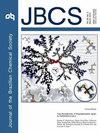Biomarkers Profile of the Mysterious 2019 Oil Spill on the Northeast Coast of Brazil and Discrimination from Unreported Events
IF 1.3
4区 化学
Q3 CHEMISTRY, MULTIDISCIPLINARY
引用次数: 0
Abstract
In 2019, large amounts of oil reached the northeast coast of Brazil, causing damage to the environment and the local economy, especially in the state of Pernambuco. In order to correlate with possible sources, investigation was made of the geochemical biomarkers of the oils using “gold standard” forensic protocols from the European Committee for Standardization (CEN). The biomarkers study was improved by using gas chromatography-tandem mass spectrometry (GC-MS/MS), rather than the standard protocol that suggests use of the selected ion monitoring (SIM) method. Analysis was made of thirteen oil samples from the Pernambuco coast, in order to identify their degrees of similarity and the possible presence of oils from unreported spills. The use of eighteen diagnostic ratios and multivariate analysis revealed a cluster formed by eleven samples with biomarker distributions typical of oil from the 2019 spill. However, two samples had anomalous fingerprints, especially due to the absence of the 18α(H)-oleanane and 18β(H)-oleanane isomers. Both the CEN protocol applied for the classical biomarkers and a comprehensive Fourier transform mass spectrometry (FT-MS) analysis of polar compounds confirmed the dissimilarities between the samples. The findings suggested that these two oils could have originated from an event unrelated to the mysterious 2019 spill.2019年巴西东北海岸神秘漏油事件的生物标志物特征及对未报告事件的歧视
2019年,大量石油到达巴西东北海岸,对环境和当地经济造成破坏,特别是在伯南布哥州。为了与可能的来源联系起来,使用欧洲标准化委员会(CEN)的“金标准”法医协议对石油的地球化学生物标志物进行了调查。采用气相色谱-串联质谱法(GC-MS/MS)改进了生物标志物研究,而不是采用建议使用选定离子监测(SIM)方法的标准方案。对来自伯南布哥海岸的13个石油样本进行了分析,以确定它们的相似程度以及可能存在未报告泄漏的石油。使用18种诊断比率和多变量分析显示,由11个样本组成的聚类具有2019年泄漏石油的典型生物标志物分布。然而,两个样品有异常的指纹图谱,特别是由于18α(H)-齐墩烷和18β(H)-齐墩烷异构体的缺失。经典生物标记物的CEN协议和极性化合物的全面傅里叶变换质谱(FT-MS)分析证实了样品之间的差异。研究结果表明,这两种油可能源于与2019年神秘泄漏无关的事件。
本文章由计算机程序翻译,如有差异,请以英文原文为准。
求助全文
约1分钟内获得全文
求助全文
来源期刊
CiteScore
2.90
自引率
7.10%
发文量
99
审稿时长
3.4 months
期刊介绍:
The Journal of the Brazilian Chemical Society embraces all aspects of chemistry except education, philosophy and history of chemistry. It is a medium for reporting selected original and significant contributions to new chemical knowledge.

 求助内容:
求助内容: 应助结果提醒方式:
应助结果提醒方式:


